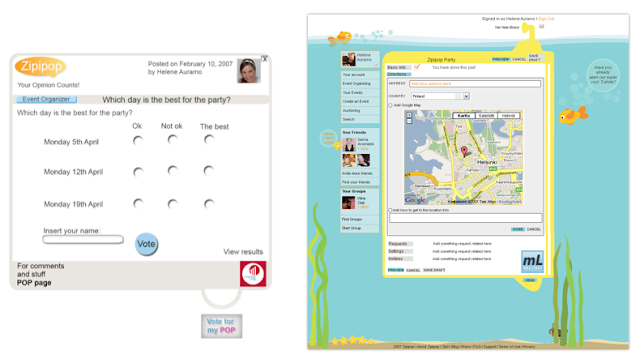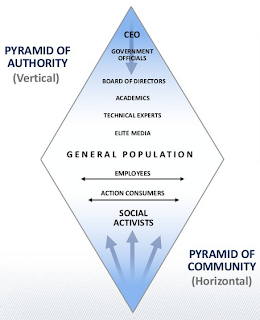Within weeks of meeting at Media Lab, Helene and I decided we would start a Web 2.0 type company (social media as a concept hardly existed back in the autumn of 2006).
Initially the idea was to create a service around embeddable opinion polls (similar to what
PollDaddy became); however, one of the poll ideas was to collect information for organizing a party, so we decided to develop the ZipiEvent Organizer.
However, we were highly aware of the growing phenomenon developing in the US called
Facebook, and in being conscious that Facebook would become a huge influence, we decided in the summer of 2007 to "experiment" with two Facebook apps as a learning activity for later integrating the event organizer - which became a sweet rudimentary prototype.

The first of these was
Friends Pad, which introduced the capability to respond to Facebook status messages well over a year before Facebook made it standard; similar with the grouping features it provided. This app quickly gained about 15,000 Finnish users in a few months, which seemed like a lot back then. This also made us the first Finnish "company" to develop a Facebook app.
From the beginning Facebook apps had open developer pages where the users could give direct feedback, and it was in learning to manage these spaces that we really started to learn about how to manage social media, and the importance it would have in future customer support and relations.
Together with the blogging, the app management and making the odd video, we soon cut our teeth in social media while operating on the front line (or should that be online).
It wasn't long before companies where approaching us to help them out with Facebook and other social media needs, but I'll leave that part of the story to later.
Have a great weekend!





